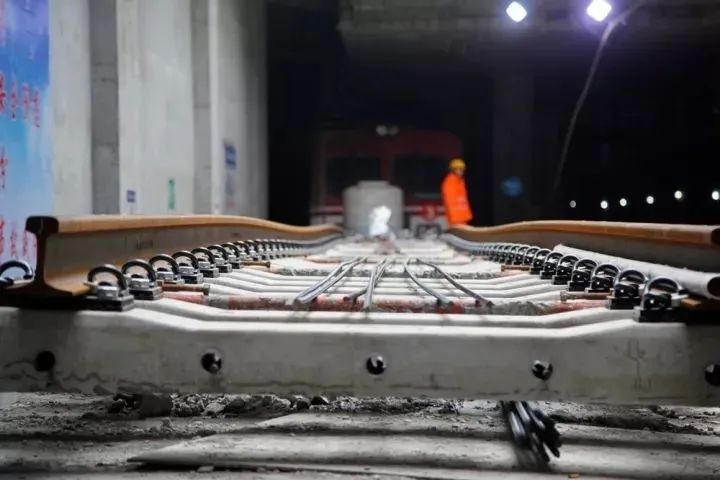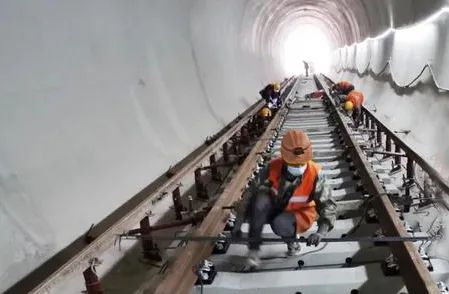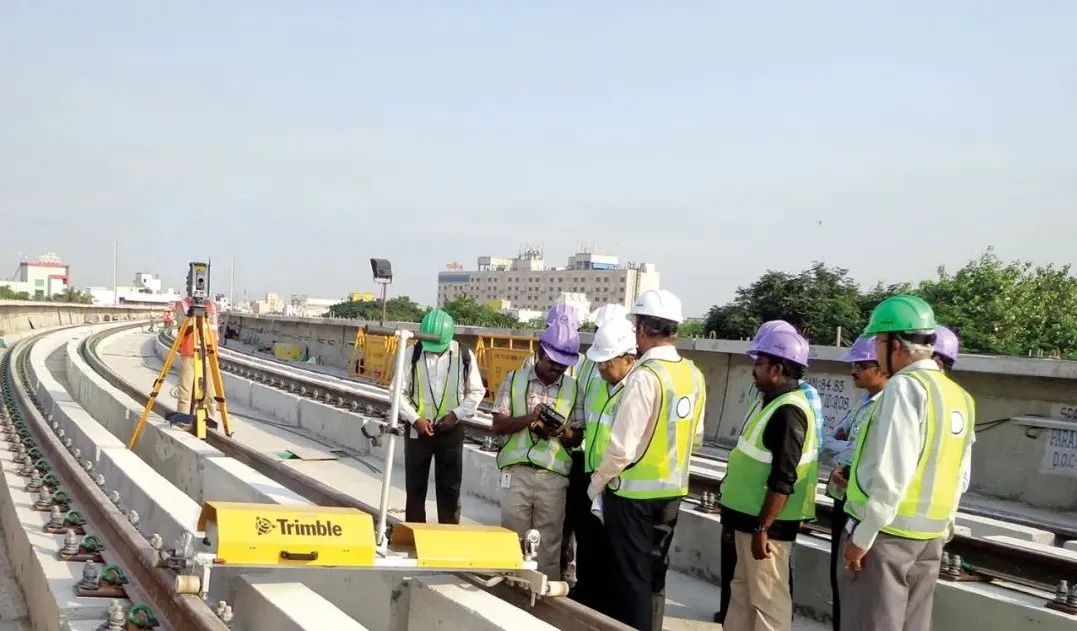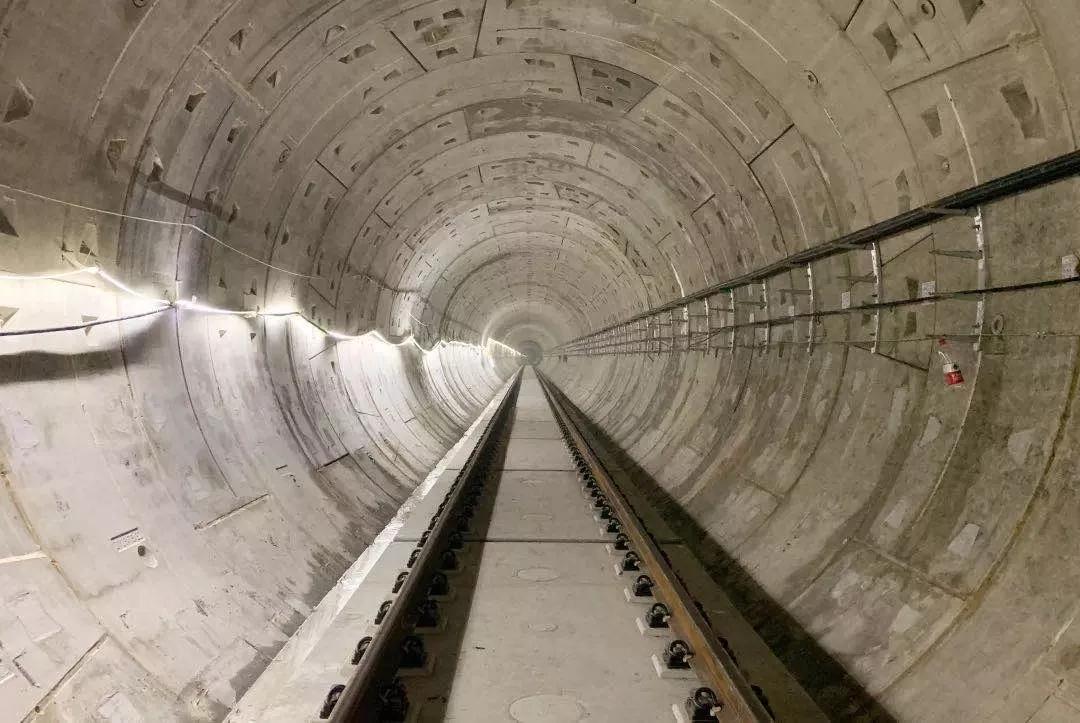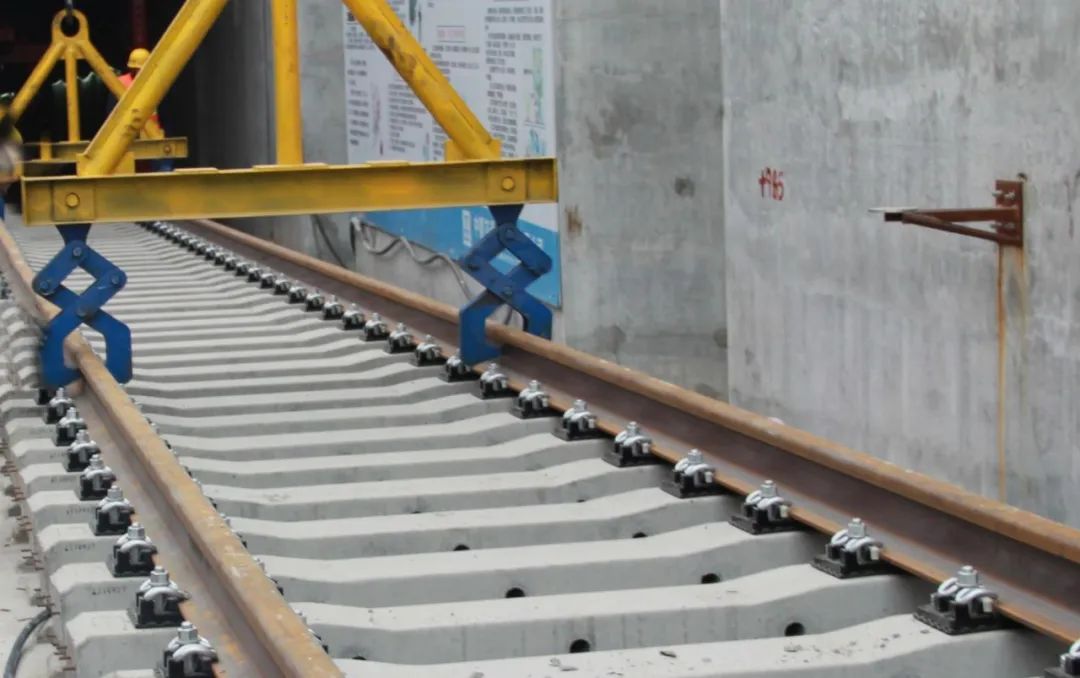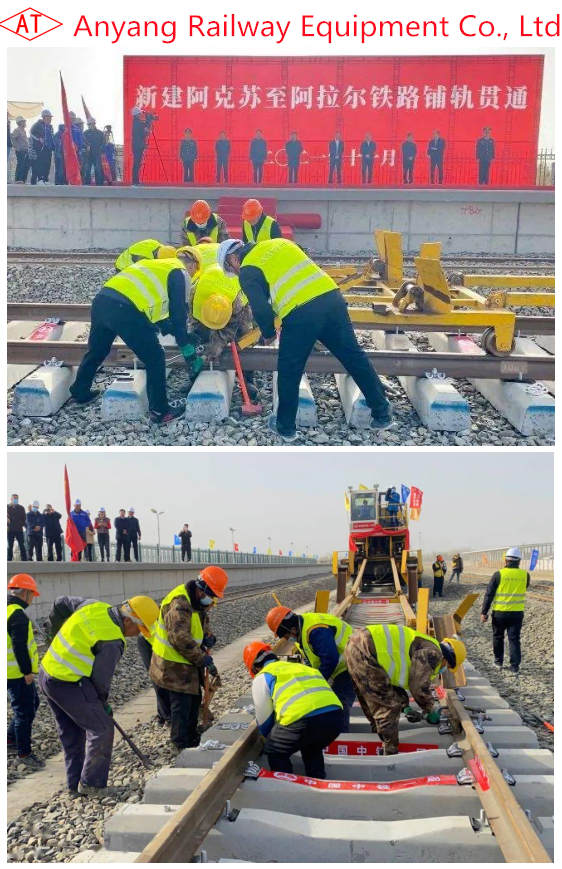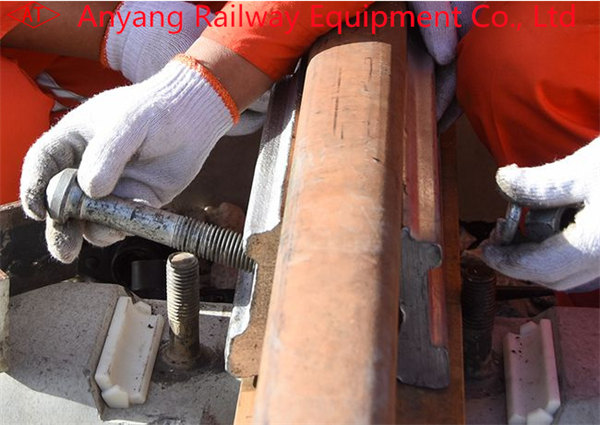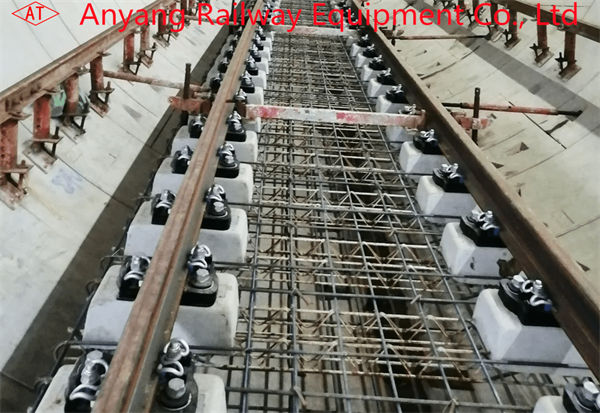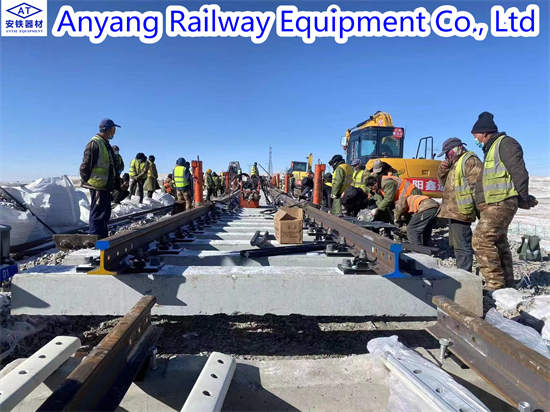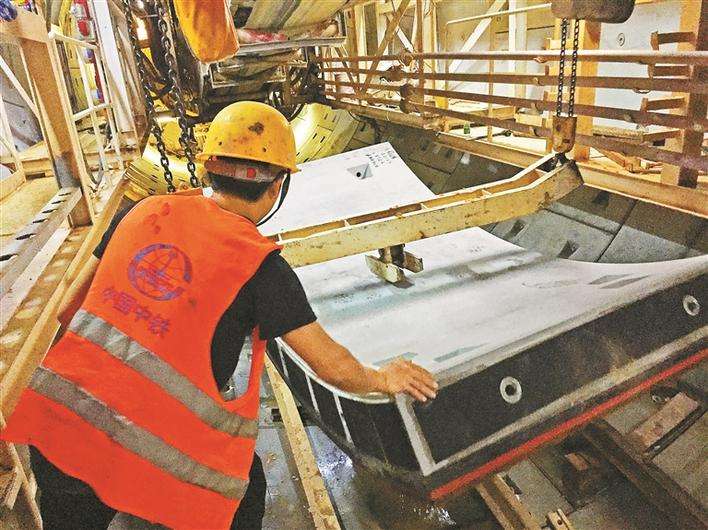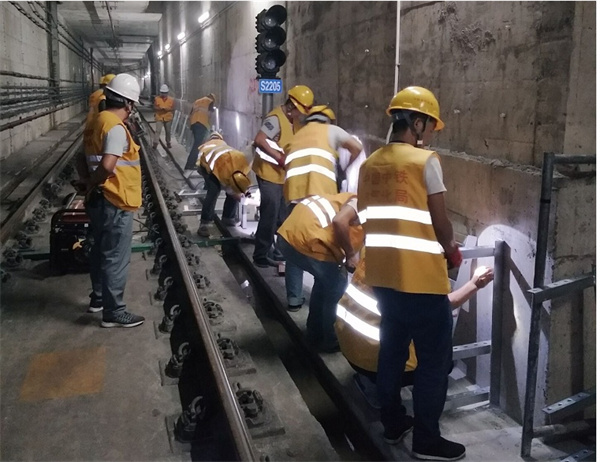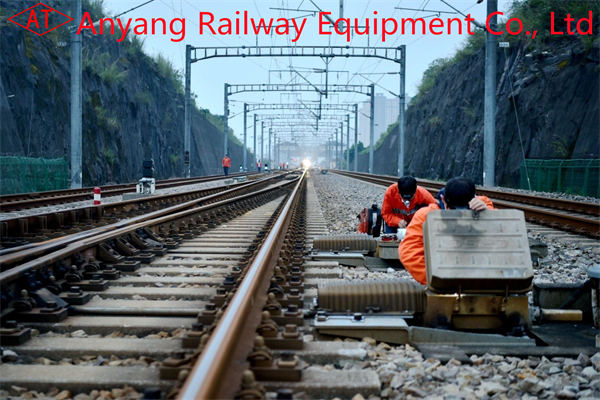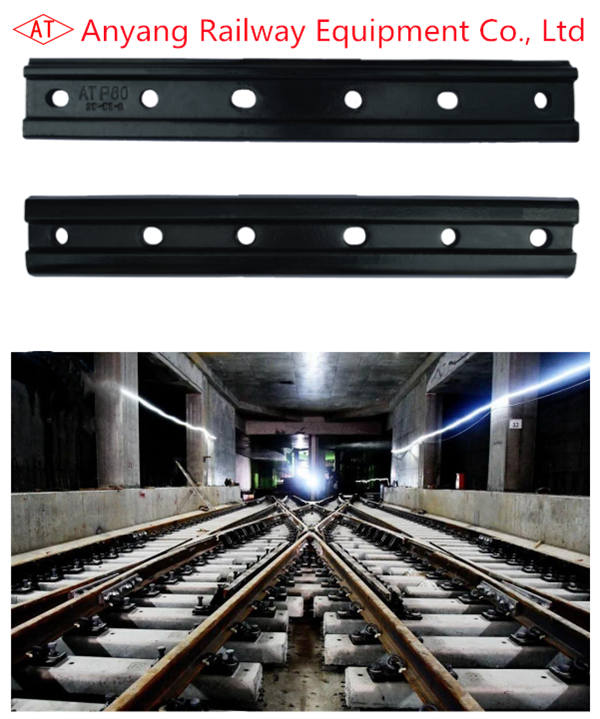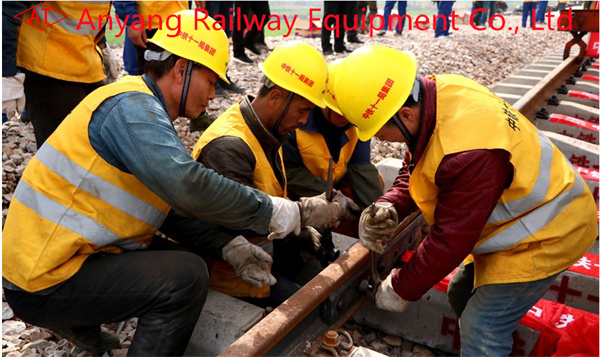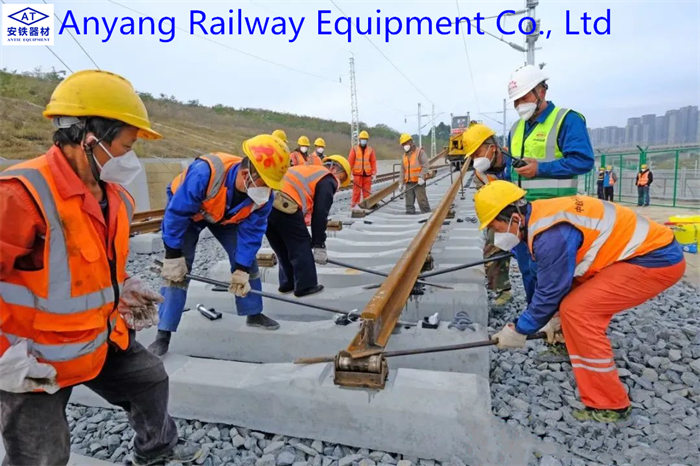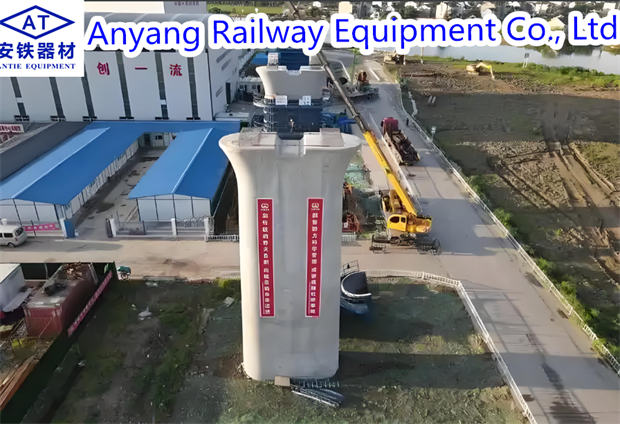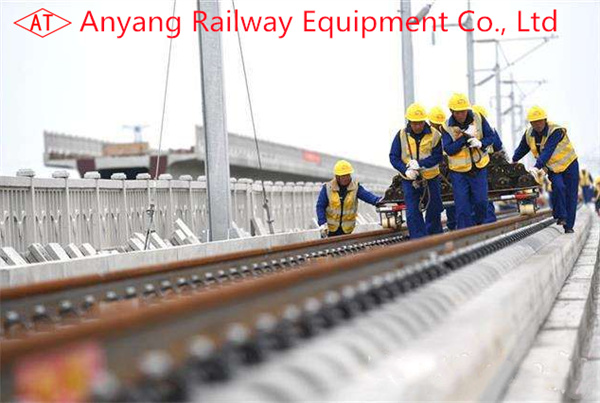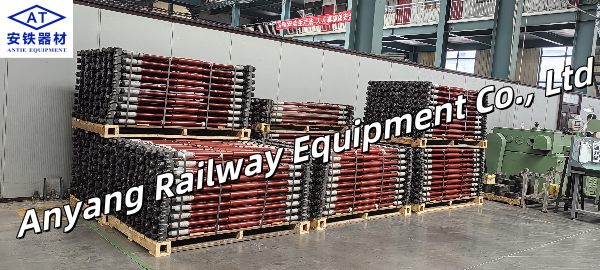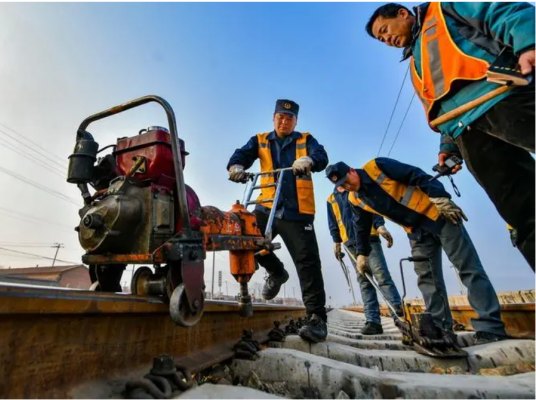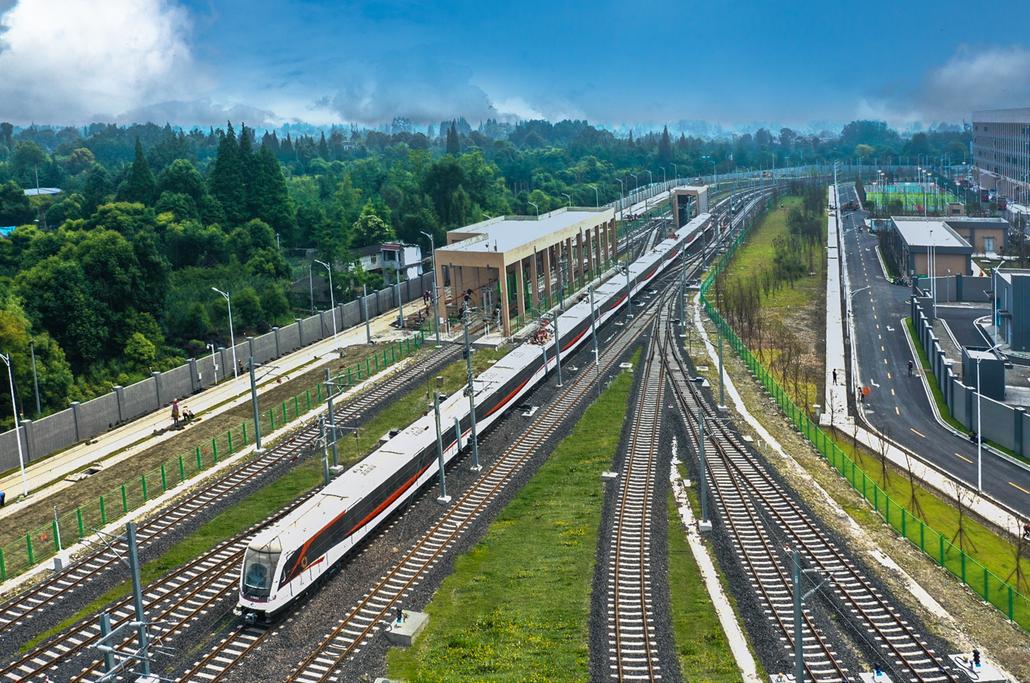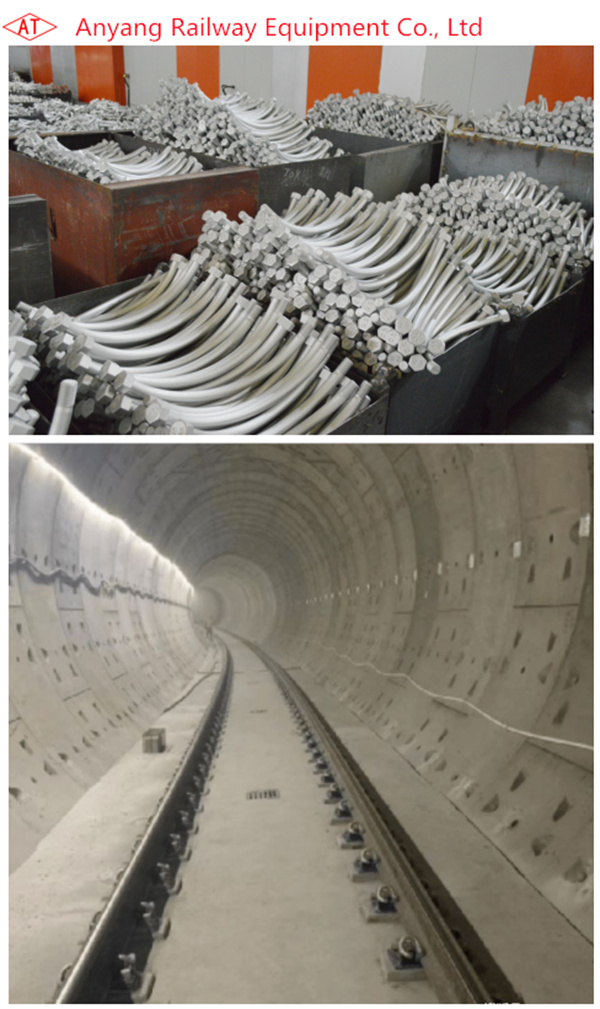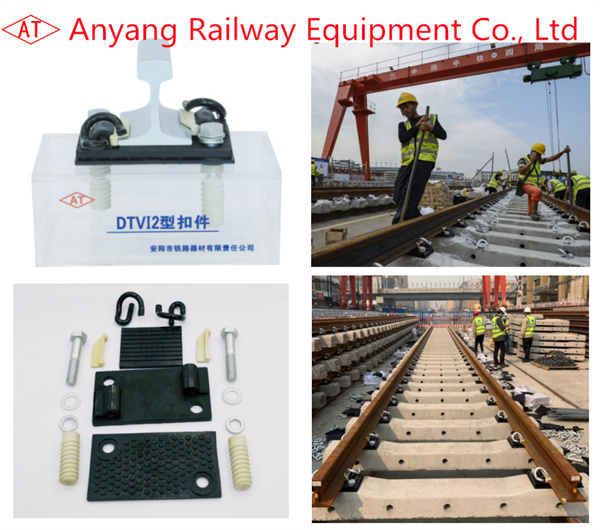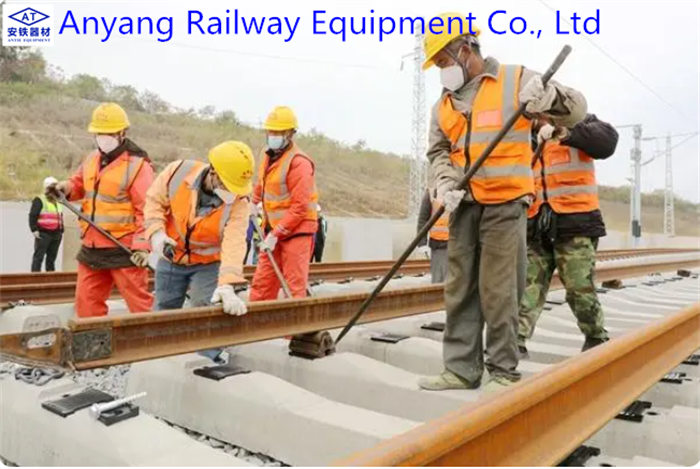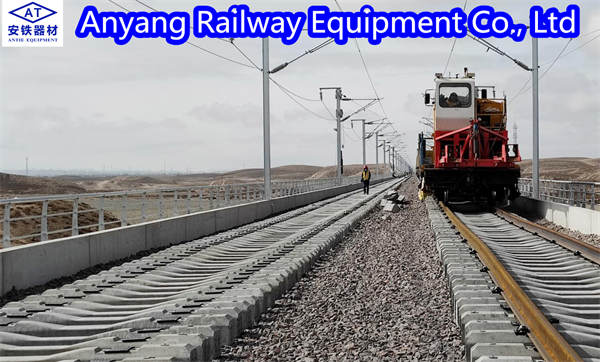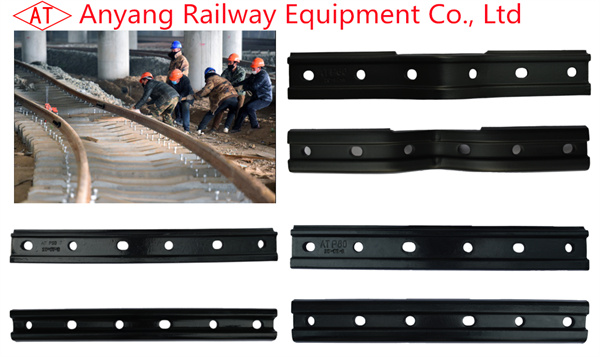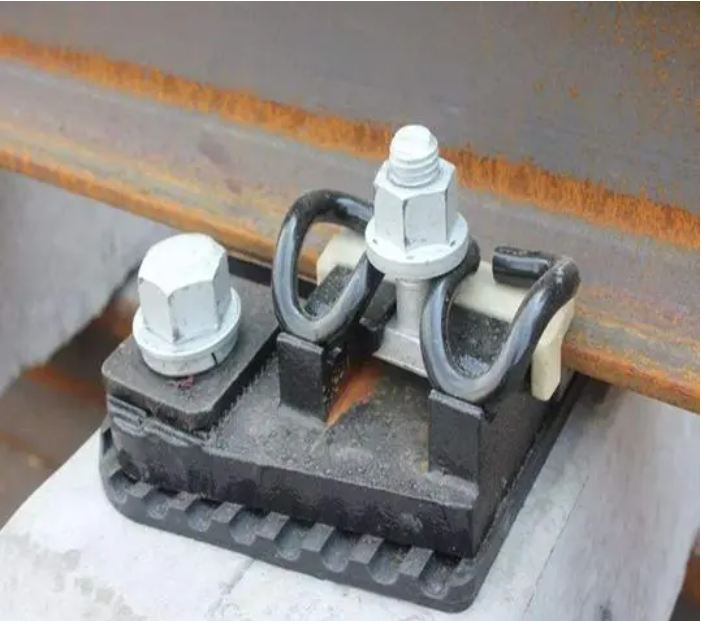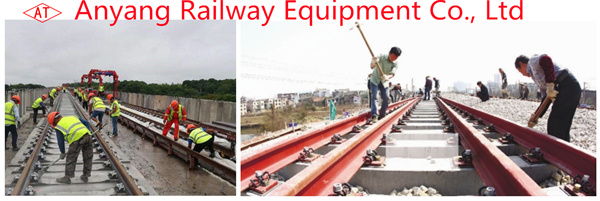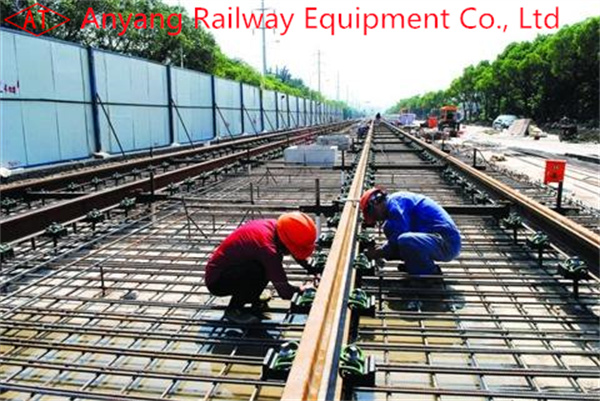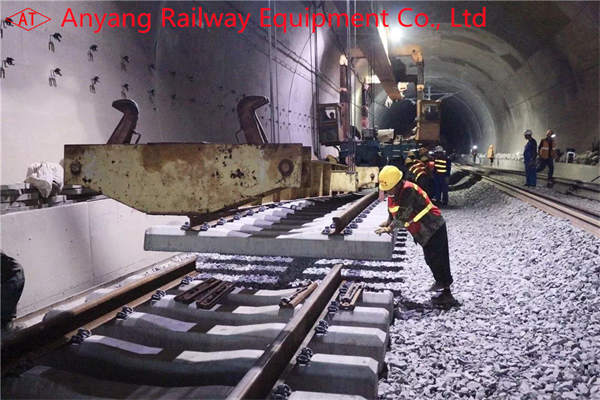Track assembly and hoisting:
Due to the limited space in the tunnel, the rails are usually pre-installed on the ground. Workers first combine the rails and sleepers on the ground (that is, “track”), adjust the distance between the rails and the distance between the sleepers to the design requirements, and fasten them together with fasteners to facilitate further installation and adjustment in the tunnel later. After the track is assembled, it is hoisted underground by the gantry crane on the ground and placed on the flatbed of the rail car for transportation. The rail car then transports the track to the designated installation location.
Centerline layout:
Before laying the track, clean the bottom plate, roughen the frame bottom plate, and blow it clean with compressed air. Then, measure and lay out the track centerline control points on the bottom surface every 10 meters (5m for curves) through the CPIII control points. Usually, steel nails are used to accurately locate and red paint is used to mark the center line. Then, the center line is popped out with ink lines. The edge line of the roadbed plate is popped out with ink lines with reference to the design width. The width of the roadbed plate is determined, and the track crane track and bracket are installed at the same time.
Track coarse adjustment:
Track coarse adjustment can be completed by using a total station combined with a digital track gauge, or by using a track geometry measuring instrument. Before work, the track line data, including design data such as horizontal curves, vertical curve elements, and broken links, are reviewed and input into the software. Coarse adjustment order: centerline first, then elevation. Coarse adjustment principle: it is better to be low than high in elevation, and the smaller the centerline error, the better. Coarse adjustment standard: centerline 2mm, elevation -5~0mm.
The total station is positioned by the free station setting method. When setting the station, at least 4 pairs of CPIII control points nearby are observed. The three-dimensional coordinates of the station setting of the total station are determined by the rear intersection station setting function of the total station. The station spacing is generally about 60m-120m. The error in the station setting should be less than 1mm, and the residual error of the CPIII control point should be less than 2mm. At least 2 pairs of CPIII control points are overlapped and observed at two adjacent stations. The center line of the track is adjusted by using the center line point of the track and referring to the center reference on the track. The horizontal adjustment bolts at the bottom of the support studs are used to adjust the left and right, and the studs on both sides of the track frame are rotated to adjust the elevation.
Considering that the distance from the total station gradually increases as the track inspection trolley moves, the error also increases. It is generally required that the measurement range of each station should not exceed 80m.
Track fine-tuning:
Track fine-tuning is currently mainly completed by total station combined with track inspection trolley. First, the total station is positioned by free station setting method. As with the rough adjustment requirements, at least 4 pairs of CPIII control points nearby are observed during station setting. The three-dimensional coordinates of the total station are determined by the total station’s built-in resection station setting function. If the error in free station setting is greater than 0.7mm, the station should be reset. After station setting, the total station is connected to the track inspection trolley for communication. After the total station is moved, at least 4 control points used in the rear must be cross-observed, and at least one set of track rows that have been fine-tuned must be re-measured. If the deviation is greater than 2mm, the station should be reset and the cause should be found out.
The track inspection trolley is placed on the track, and the prism is installed. The prism of the track inspection trolley is measured using a total station. The parameters of the prism used by the CPIII are consistent. The track inspection trolley automatically receives the observation data, and measures the track data through the sensors on the car body. Through the supporting software, the track plane position, level, superelevation, track gauge and other data are calculated. The measurement results are compared with the design values, and the error values are fed back to the computer display screen of the track inspection trolley in real time to guide the precise adjustment of the track. The track fine-tuning should follow the principles of “track direction first, then track gauge” and “high and low first, then level”. The construction personnel adjust the support according to the displayed difference until the difference is close to 0mm.
To adjust the horizontal position, use the special wrench for the track to adjust the left and right lateral adjusters on both sides of the track. Usually, this work requires two workers to adjust both sides at the same time, that is, adjust two groups at a time. To adjust the elevation, use a socket wrench to rotate the vertical studs to adjust the track level and superelevation. During the fine adjustment process, the position with large deviations should be adjusted first, and the situation where the adjacent studs need to be adjusted should be considered. The adjustments should be coordinated and consistent. When adjusting in curved sections, the vertical and horizontal directions should be adjusted at the same time.
Successive transition:
When a station is adjusted, the total station is moved to the next station, and the 8 to 10 sleepers adjusted at the previous station need to be rechecked. Subsequent adjustments can only be made when the station setting accuracy, CPIII control point residuals, and rechecked rails meet the requirements. The relative deviations of the horizontal and elevation measurements of the same point at two station settings should not exceed 2mm. The transition section starts from the first rail row after the successive connection, and the data decrease value of each sleeper should be less than 0.2mm until the absolute deviation is close to 0.

